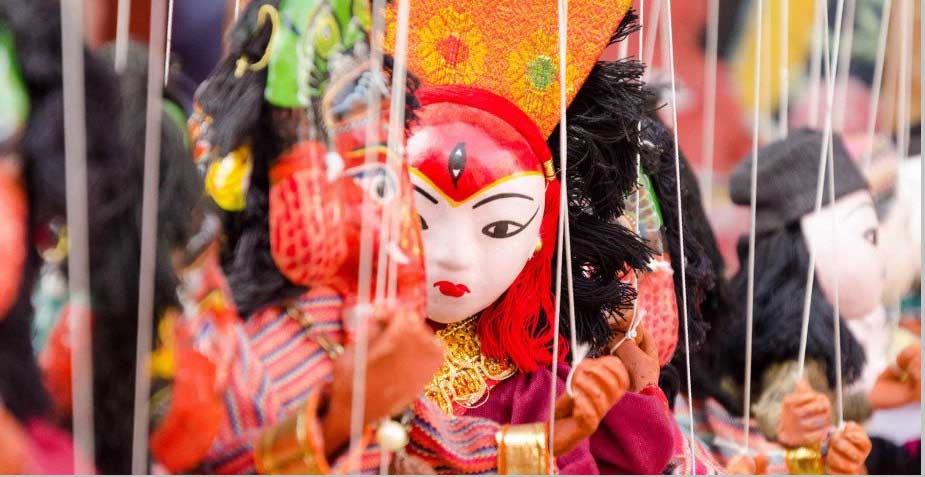
Gaijatra Festival: History, Culture, and Satire in Nepal
Nepal is culturally rich, and among its many traditions, Gaijatra is one of the most popular. Its connection with humor and satire makes it a favorite for many. The history of humor and satire in Nepal is long, and the cultural tradition is well-developed. Gaijatra has played a significant role in highlighting various forms of humor.
Although traces suggest that Gaijatra may have been practiced in Nepal since the 14th century, it became a recognized tradition in the three kingdoms of the Kathmandu Valley during the 17th century.
Historical Origin
During the period of the three kingdoms in the Kathmandu Valley, King Pratap Malla ruled Kathmandu in Nepal Sambat 1698 when he was 18 years old. The death of his young son caused unbearable grief to the queen. Unable to console her despite reminding her that many others also suffer such losses, the king issued a decree for households that had lost a family member to participate in a public procession.
As per the royal order, mourning families presented various performances to console and make the queen laugh. This brought her some comfort, and the practice gradually spread, leading to the celebration of Gaijatra in settlements, towns, and villages. King Pratap Malla is credited with starting this festival in Kathmandu, and around the same time, it also began in Lalitpur and Bhaktapur.
Today, Gaijatra is celebrated with enthusiasm in the densely populated areas of the Valley such as Tokha, Thankot (Sonitpur), Kirtipur, and Madhyapur Thimi. In Patan, apart from the main festival, Matya is celebrated with grandeur. Bhaktapur’s Gaijatra is distinctive, traditionally known as “Saparu” or the Cow Festival, observed on the first day of the lunar fortnight. It features elaborate processions, the “Ghinta Ghisi” stick dance, and tall bamboo structures decorated with cloth representing various symbols, parading through the city.
In Palpa’s Tansen, processions include devotional singing and parading with a cow’s image attached to a bamboo frame. Families who have lost loved ones within the past year offer food and water to procession participants.
A Festival of the People
Gaijatra has unique features not found in other festivals worldwide. It draws massive public participation, making it one of Nepal’s largest festivals. In the Kathmandu Valley, humorous performances, satire publications, and televised comedy shows are part of the celebrations, alongside street parades from morning to evening. The Valley observes a public holiday on this day, and week-long satire programs are organized.
Outside the Valley, Gaijatra is celebrated in Newar communities and other parts of Nepal, including Banepa, Panauti, Dailekh, Dhading, Dhankuta, Jumla, Palpa, Pokhara, Salyan Phalabang, Bhojpur, Birgunj, Biratnagar, Chainpur, Dolakha, Dharan, Hetauda, Ilam, and Khotang. Gaijatra remains a uniquely Nepali tradition.
In everyday speech, the term “Gaijatre” is used to describe absurdity, contradictions, or chaotic situations, even in politics.
Satire and Social Commentary
In Patan, the traditional Kartik Naach (Kartik Dance), initiated by King Siddhi Narsingh Malla, includes comedic acts that continue to this day. Stories such as “Four Thieves at the Crossroads” portray tricksters deceiving innocent people—parallels to present-day social exploitation.
Gaijatra has long been a medium for exposing corruption, absurdities, and contradictions in society. It has targeted political malpractice, social injustices, and misuse of power. Humorists and satirists use the festival to provoke thought and encourage reform, believing that satire aims not to harm but to inspire improvement.
Royal and Public Endorsement
Even during the strict Rana regime, Gaijatra was performed in royal courtyards, public squares, and streets. With modern times, it has expanded to televised broadcasts and social media. Since 2033 B.S., the Royal Nepal Academy began organizing a week-long National Satire Festival during Gaijatra, featuring selected performances from across the country.
These events were attended by the royal family, ministers, senior officials, scholars, and the public. Satire writers, cartoonists, and comedic performers used the platform to reflect on societal issues and hint at the need for change. Newspapers and magazines published special satire editions with thought-provoking content.
Decline and Transformation
Over time, political divisions affected the integrity of the performances, with some turning into partisan displays. The competitive element of Gaijatra satire festivals diminished in the democratic era, though individuals and communities still celebrate the tradition in their own ways.
Publications marking the festival have also declined, despite the tradition’s potential to combine social reform with entertainment.
Philosophy Behind Gaijatra
Gaijatra originated as a way to transform grief into strength. It began when a mourning queen was comforted through public participation and humor, offering her a way to cope with loss.
The cow, in religious belief, is considered a guide across the Vaitarni River in the afterlife, adding a spiritual dimension to the festival. Philosophically, Gaijatra reminds people of life’s impermanence and encourages them to live joyfully despite inevitable death.
Contemporary Relevance
Modern life has grown increasingly complex, and stress-related illnesses and suicides are on the rise. In many countries, political powers have attempted to suppress satire, targeting journalists, cartoonists, and writers. Yet humor remains an essential tool for public awareness and societal healing.
Internationally, satire is studied in depth. The International Society for Humor Studies (ISHS) is well-known for promoting humor research. In 2024, it hosted its 34th conference in Krakow, Poland, with around 200 prominent humorists, scholars, and artists from various countries. Research papers and discussions explored multiple aspects of humor, including its role in therapy and character development.
Nepal, however, has yet to begin structured academic research into humor despite its rich tradition.
Nepal’s Representation in International Humor
The author of this account has represented Nepal in humor conferences in Australia, Japan, Italy, and most recently, Poland, where a paper was presented on humor therapy for adolescent character development. In the closing banquet, Nepal’s vision of establishing “Houses of Laughter” and hopes for a Humor Olympics for future generations were shared.
Gaijatra remains both a celebration of life and a platform for truth-telling, blending laughter with reflection, and continuing to serve as one of Nepal’s most meaningful cultural traditions.
Festival

